Where is Djibouti?
About Djibouti
The Land
The People
Life and Death
Health, Energy and the Environment
Education and Work
Travel, Communication and the Media






Back to the Flags of Africa page

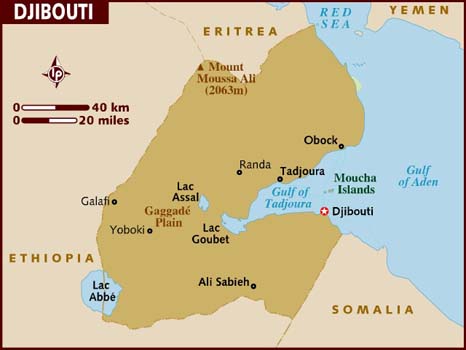


Djibouti is a below-average sized country in north east Africa.
Djibouti borders the Red Sea and the Gulf of Aden.
The land is mainly a coastal plain with central mountains.
The geographical coordinates for the centre of Djibouti, also known as lines of latitude and longitude, are:-
Latitude - 11 30N
Longitude - 43 00E
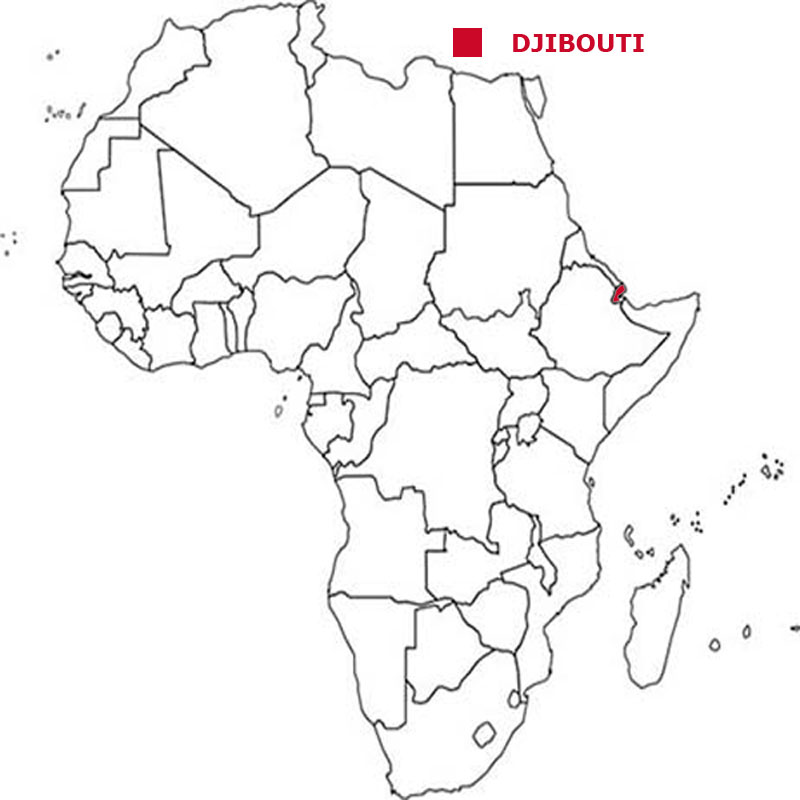

Check the weather in Djibouti now.
This is the time in Djibouti now
 The Djiboutian flag is two equal horizontal stripes of light blue, at the top, and light green, at the bottom. A white isosceles triangle is based on the flagpole
side with a red five-pointed star in the centre. The blue represents the sea and sky and the Issa Somali people while the green is for the earth and the Afar people.
White represents peace and the red star recalls the struggle for independence and stands for unity.
The Djiboutian flag is two equal horizontal stripes of light blue, at the top, and light green, at the bottom. A white isosceles triangle is based on the flagpole
side with a red five-pointed star in the centre. The blue represents the sea and sky and the Issa Somali people while the green is for the earth and the Afar people.
White represents peace and the red star recalls the struggle for independence and stands for unity.
Djibouti is a semi-presidential republic with a president as head of state and a prime minister as head of the government.
In elections everyone over the age of 18 can vote.
The currency in Djibouti is the Djiboutian franc.
Arabic and French are the official languages.
Hear the National Anthem
These are the anthem words
We have already written our own history of England but are asking schools in Djibouti to provide us with a detailed history of
their own country. Check how here.
![]()
![]() Back to the top
Back to the top

The total land area of Djibouti is 23,180 sq kms which is the 48th largest in Africa.
Djibouti has lakes, rivers and canals which total 20 sq kms.
Djibouti has boundaries with 3 countries
- Ethiopia 342 kms
- Eritrea 125 kms
- Somalia 61 kms
Djibouti has a coastline of 314 kms which is the 31st longest in Africa.
The highest point in Djibouti is Moussa Ali at 2,021 metres.
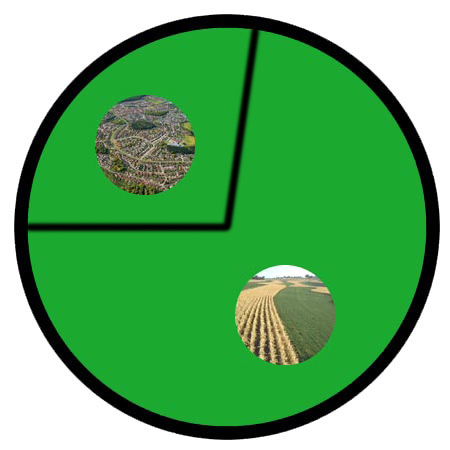

The total population of Djibouti is 884,017 people, making it the 49th largest country in Africa by population.
Of this number 480,776 are females and 403,241 are males.
A person from Djibouti is called a Djiboutian.
To be a citizen of Djibouti, your mothers must be a citizen of Djibouti. It is not sufficient to be born in Djibouti. You have to live in Djibouti for
10 years before you can begin to apply for citizenship.
The largest five cities in Djibouti, by population are:-
- Djibouti 623,891 people
- Ali Sabih 55,000
- Tadjoura 22,193
- Obock 17,776
- Dikhil 12,043
 Each little Owlbut is 1 person and
the big yellow rectangle is 1 sq km. After a while you can compare countries and see which ones are the most crowded. Remember it is only an average as
more people live closer together in towns and cities than in villages out in the country.
Each little Owlbut is 1 person and
the big yellow rectangle is 1 sq km. After a while you can compare countries and see which ones are the most crowded. Remember it is only an average as
more people live closer together in towns and cities than in villages out in the country.
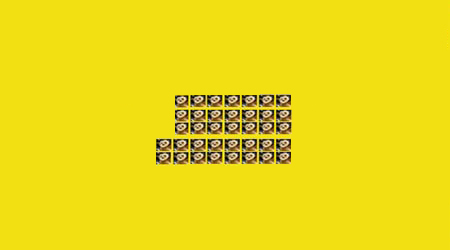
77.8% of the people live in cities or towns.

The birth rate in Djibouti is 23.3 births per 1,000 of population
The death rate in Djibouti is 7.5 deaths per 1,000 people.
Check this against the birth rate. If the death rate is higher than the birth rate then
the population will decrease unless immigrants arrive in the country.
There are 37.5 deaths of girls under 1 year per 1,000 of births and 50.9 deaths of boys.
The median age for females is 25.7 and for males is 22.4. The median age is that age which divides the population exactly in half so there are the same number
of people above the median age as below it.
We have no figures for the average age of a woman when she has her first child.
The elderly dependency ratio is 6.4. This is the number of elderly people (ages 65+) per 100 people of working age (ages 15-64).
The potential support ratio is 15.6. This is the number of working-age people (ages 15-64) per one elderly person (ages 65+). As a population ages, the potential support ratio tends to fall, meaning there are fewer potential workers to support the elderly.
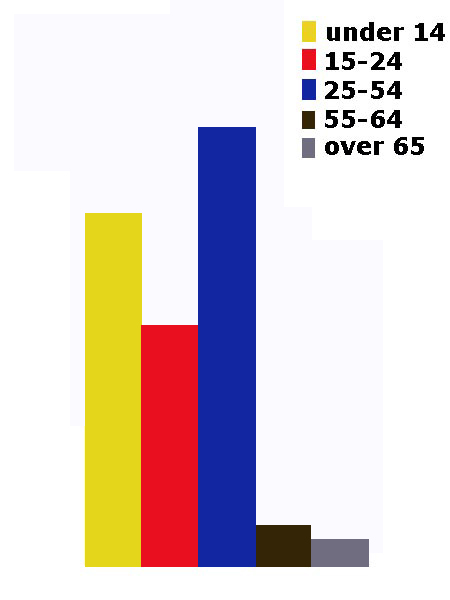
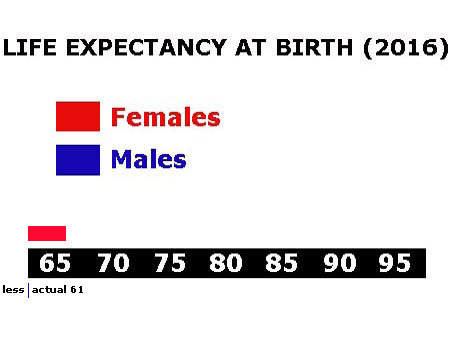

Djibouti spends 10.6% of its total income on health care.
There are 0.22 doctors per 1,000 people.
There are 1.4 hospital beds per 1,000 people.
13.5% of the population are estimated as obese.
97.4% of the urban population and 64.7% of the rural population have drinking water that is either piped into their home or they have access to a public tap, a protected borehole, well, spring or
protected rainwater collection facility.
59.8% of the urban population and 5.1% of the rural population have access to a flushing toilet that is connected to a sewer, a pit latrine (that is a
permanent hole in the ground that is looked after) or a composting toilet.
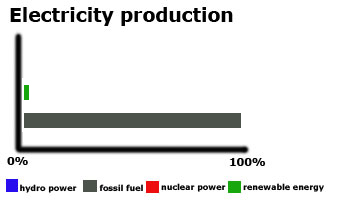
Djibouti releases 1.8 million metric tons of carbon dioxide by burning fossil fuels in the process of producing and consuming energy. This puts it as the 32nd highest in Africa.

Djibouti spends 4.5% of its total income on education.
Children usually start school at age 6 in Djibouti. Primary education is for five years until age 11 and secondary education must continue till 16 but can go on to 18/19. This may be followed
by further education at a university or college.
We are awaiting information about school terms in Djibouti
We have no figures for the number of people who are able to read and write by the age of 15.
We have no figures for the number of people aged between 16 and 24 who are not in work.
The total number of people available for work in Djibouti is 294,600.
 They work in the following sectors.
They work in the following sectors.
- Agriculture includes farming, fishing and forestry work
- Industry includes mining, manufacturing, construction and energy workers
- Services is everything else

There are 3 paved airports in Djibouti, which is the 40th highest number in Africa.
![]()
There are 97 kilometres of railways in Djibouti, the 37th longest in Africa.
![]()
There are 3,029 kilometres of roads in Djibouti, which means Djibouti is in 47th place for the most kilometres of roads in Africa.
![]()
There is 1 major national newspaper in Djibouti.
There are 363,052 mobile phone users.
4% of the people have a fixed landline.

111,212 people have access to the internet at home via any device (computer or mobile).


